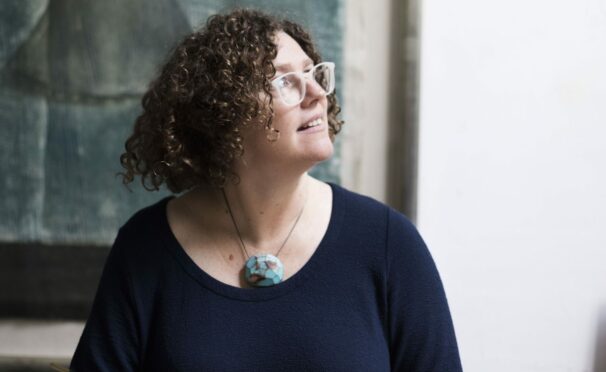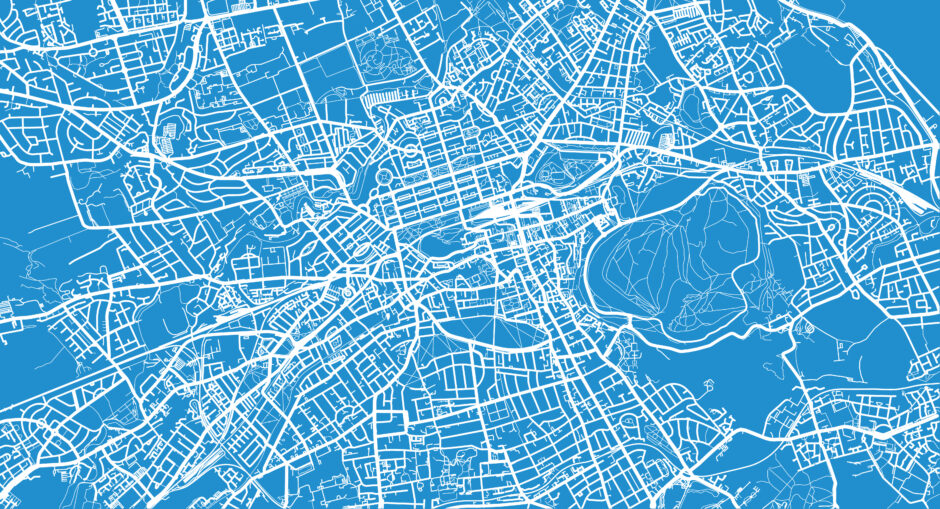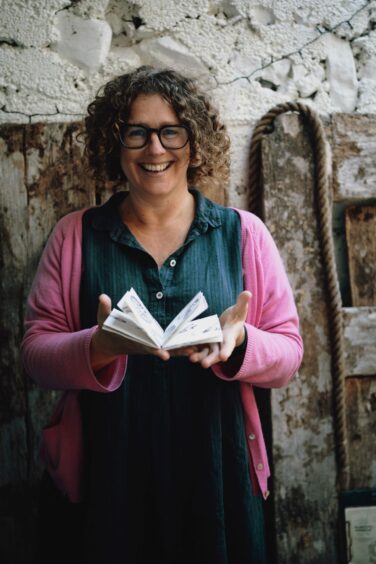
The written word has long been hailed for its life-changing powers but, according to artist Rachel Hazell, not enough attention is paid to the paper and bindings that bring prose, stories and poems to life.
Having spent the best part of two decades working as a creative bookbinder, Hazell believes the process of crafting books – whether from classic paper or more unusual materials such as old love letters or driftwood – can open up and even heal the mind just as much, or more, as the words and sentences typed on the page.
“In a way, my career has come out of loss,” explained Hazell, who studied traditional bookbinding at the London College of Printing, and now splits her time between Edinburgh and the small island of Iona in the Inner Hebrides.
“That sounds like a really sad thing, but it’s been my way of dealing with the early loss of my parents, who died when I was 17 and then 23. The process is very set – there are different things that you do in a particular order – and I find that very restful and meditative. Your hands are engaged, but your brain is kind of floating, so you can just relax. By the time I’ve bound the book up, I’ve also sorted things out in my head.”
With the 51-year-old’s journey into the ancient art form beginning in moments of heart-breaking grief, she has gone onto dedicate her career to helping other people “navigate the world through art”, holding workshops and retreats in every corner of the globe. As well as working from a lighthouse in Shetland and teaching on the Isles of Scilly, she was also an artist-in-residence in Antarctica and, appropriately, now calls herself The Travelling Bookbinder. Opportunity and curiosity have continued to feed her wanderlust but, again, it was her parents who originally led her down a new path of exploration.
“When I was 15 I had a pen pal in West Africa and my mum, a great facilitator and enabler, booked me a ticket to fly there,” explained Hazell of the moment she began combining her love of books with travel. “I spent a month there and was terrified. I arrived late at night, it was dark, pitch black, there was the sound of crickets and a very tropical smell that was so different to anything I had known. It was a French-speaking household, too, and my schoolgirl French was not very nuanced, but the experience was absolutely amazing.
“I took loads of books with me, and I think because it was all new and terrifying, I hid or took refuge in the stories to hide myself away, and keep that bit of ‘the known’.”
It’s unsurprising given her love of travel that Hazell’s latest project revolves around maps, and uses bookbinding to exploring everything from memories to future dreams. Using the “language of mapping” to create 12 handmade books, Hazell’s MapLove e-course, she says, is for “anyone who’s spun a globe, pored over sea charts or traced their finger along a paper route” and wants to delve further.
She said: “It’s imaginative travel you can do from your armchair. I haven’t met anybody who doesn’t like pouring over an atlas, looking at funny names of places, the incredible contour lines of steep mountains or the shapes of coastline. Aesthetically, maps are incredibly rich and beautiful.
“The better you understand yourself, the easier it is to navigate into the future as well because you know your strengths and your weaknesses and what you like best – and where you want to go. The course is about discovery, of both yourself and the world around you, and about finding new ways to tell your story.”
She continued: “I don’t like to make claims that my workshops are transformational but you can’t help but shift your perception by taking yourself out of where you normally are and what you normally do. That leads to reflection and contemplation and revelation.”
Although traditionally assembled in a codex format, with stacks of paper sheets folded together into sections, Hazell teaches many bookbinding techniques, which she says re-inforce the special quality of the pages.
“There are lots of different ways and structures, and they might not be books as you know it,” she explained. “I love subverting ideas of what the book is, but still keeping the power of the imagination, so you can invent things and keep your story safe inside.
“One example is a Turkish map fold that is put between the covers to make to a little book. It’s very, very simple, but very, very effective way of making your own book, so it’s very accessible. You don’t need specialist equipment, and you can literally fold the first few pages out of single sheets of paper or cut paper into strips and then sew them together to make a longer concertina. Or you can also use a very big bit of paper and fold it into a book that has pockets but stands like a presentation piece rather than the codex that we’re used to, with its hard covers that slam shut. They are completely private and portable and lovely, but also presentation pieces that can be kept on your mantelpiece, by your bed, in your pocket or in your bag when you go on holiday so you can add and write in words and keep little keepsakes in the pockets.”
And as for more unusual materials, like the driftwood she collects from the beach near her home, Hazell says imperfect items can help to eliminate the fear of the blank page.
She added: “I believe everybody’s got a book inside, whether it’s a one liner or just illustrations or a scrapbook. Everybody’s got a story to tell and I love encouraging people to get it on the page.”

Enjoy the convenience of having The Sunday Post delivered as a digital ePaper straight to your smartphone, tablet or computer.
Subscribe for only £5.49 a month and enjoy all the benefits of the printed paper as a digital replica.
Subscribe
